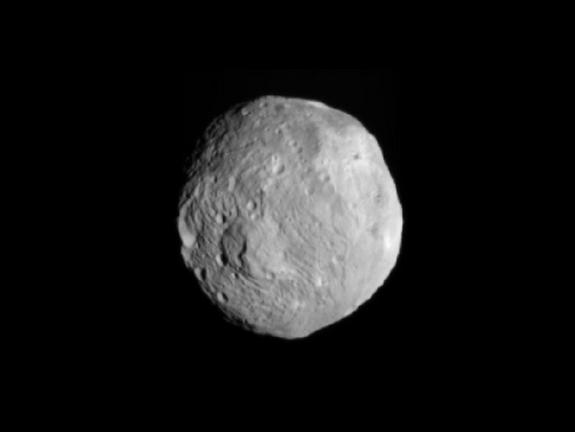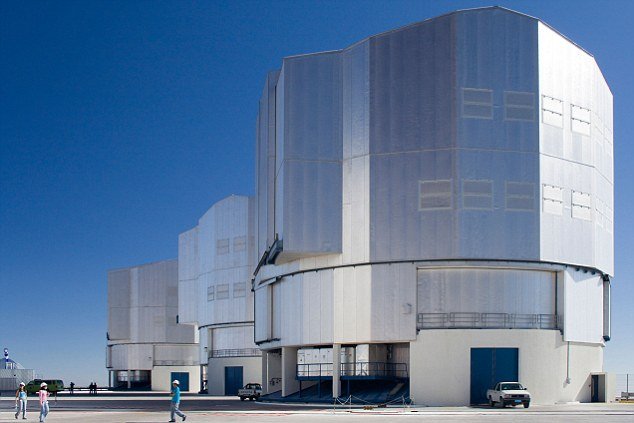Asteroid Vesta has many features of a rocky planet
Data from a NASA’s Dawn spacecraft revealed that the giant asteroid Vesta possesses many features usually associated with rocky planets like Earth.
Vesta has been viewed as a massive asteroid, but after studying the surface in detail, scientists are describing it as “transitional”.
The Dawn spacecraft has been orbiting Vesta – one of the Solar System’s most primitive objects – since July 2011.
They have documented many unexpected features on its battered surface.
Mission scientists presented their latest results at the Lunar and Planetary Science Conference (LPSC) in The Woodlands, Texas.
Dawn’s principal investigator, Christopher T. Russell, told the meeting that the science team found it hard not to refer to the object as a planet.
Christopher T. Russell said the rounded asteroid showed evidence of geological processes that characterize rocky worlds like Earth and the Moon.
Vesta is the second most massive of the asteroids, measuring some 530 km (330 miles) in diameter. It is dominated by a huge crater called Rheasilvia and bears many other scars left by the hammering it has received at the hands of other asteroid belt denizens.
One important transitional feature of Vesta can be found in its topography, or elevation. Vertical elevation on the Moon or Mars might reach tens of kilometres, but these objects are also very large.
“This means the topography is about 1% of the radius,” Dr. Ralf Jaumann, from the German Aerospace Center (DLR), said. If you go to Vesta, it is 15%, and if you go to the largest outer asteroid – Lutetia – it is 40%.”
In short, this mathematical relationship between topography and radius (half an object’s diameter), puts Vesta in an intermediate position between small asteroids and rocky planets.

Data from a NASA’s Dawn spacecraft revealed that the giant asteroid Vesta possesses many features usually associated with rocky planets like Earth
Another aspect concerns the way its surface has been modified, or “processed”, by the many collisions. This is evident in dark material that can be seen in images of its terrain.
The dark material seems to be related to impacts and their aftermath. Scientists think carbon-rich asteroids could have hit Vesta at speeds low enough to produce some of the smaller deposits without blasting away the surface.
Higher-speed asteroids could also have collided with Vesta’s surface and melted the volcanic basaltic crust, darkening existing surface material.
Scientists are confident there has been volcanism on the asteroid during its history. This is because there are hundreds of pieces of Vesta sitting in museums around the world.
They form a particular class of meteorite called the HEDs; more of these objects have fallen to Earth than all the meteorites from the Moon and Mars put together. Studies of HED meteorites have revealed telling chemical signatures of volcanic activity.
Dave Williams, from Arizona State University, said: “We know [from the HED meteorites] there were lava flows at some point in history, so I expected there to be at least a few lava flows, maybe a few channels, shields or cones. Looking at all the images in places that have been illuminated thus far, we don’t see any evidence of that.
“That’s because of all the impact processing over Solar System history. It has destroyed all the evidence.”
Mission scientist Brett Denevi, from Johns Hopkins University Applied Physics Laboratory in Maryland, explained why she thought some of the collisions that have hammered Vesta were intense enough to melt its surface.
Referring to observations of a crater called Marcia, in Vesta’s northern hemisphere, Dr. Brett Denevi commented: “We think what we’re seeing here is at least a portion of this target rock has melted and flowed. The impact velocities were high enough – at least in this one case.”
She added: “Impact melt hasn’t really been observed on asteroids before. It wasn’t really expected because the speed of collisions in the asteroid belt are pretty low compared with the inner Solar System. So it wasn’t known whether you’d have enough energy to melt the target rock.”
Dawn probe is set to depart Vesta for an even bigger object – the spherical “dwarf planet” Ceres – in August for an arrival in 2015.
[youtube F0AsnPv_oyw]

